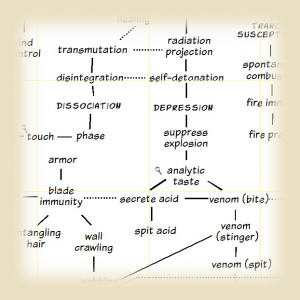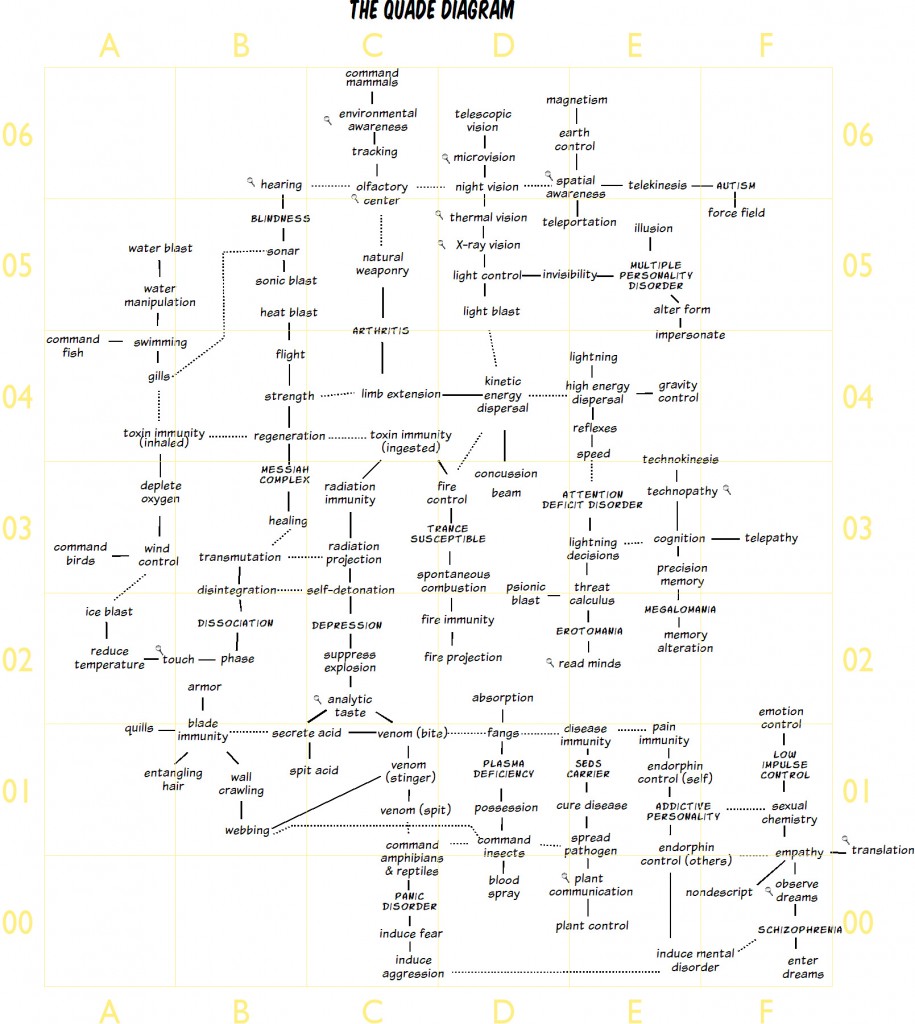Campaign Cartographer, the Writer / Designer’s Friend
Part 2 – Moving stuff around
CC3 offers the primary benefit of a CAD-based illustration tool in a gamer-friendly form. Whether creating a map or using it for any of the purposes I’ll discuss below, that benefit is ease of editing. It lets you think visually, by allowing you to easily and continually manipulate its various elements. Changing either an element or its position relative to others proves blissfully easy.
When sketching out an encounter map for publication, you’re always going to realize midway through that you need to make an adjustment—you’ve left a tactical bottleneck at the entrance, placed a trap where it won’t get tripped, or given a confusing position marker to a creature. You can move stuff around in Photoshop or one of its equivalents, but it’s a pain. On paper, forget about it. Moving stuff around is what CC is all about—for me at least.
Without that function, the already time-consuming job of designing Mutant City Blues’ Quade Diagram would have been… well, some things are too awful to contemplate. For those who don’t know it, Mutant City Blues is a super-powered police procedural for the GUMSHOE line of investigative roleplaying games. A mystery game set in a world of super-powered heroes doesn’t work unless all the extraordinary abilities have been documented and work predictably. In the MCB setting, all of the available super powers have been charted, cataloged, and placed on a relational diagram named after its primary discoverer, Dr. Lucius Quade. The diagram shows where powers cluster together on the genome. You’re highly likely to possess powers that cluster together on the chart and unlikely to manifest ones that are widely separated.
The Quade Diagram is both a rules and a world artifact. In the world, the characters employ it as a tool while solving their cases. In the game, players use it to choose and cost out their mutant powers. Because similar powers cluster together, I was forced to rearrange the chart whenever I realized that I’d missed including an obvious comic book power and had needed to add it to the master list. The thought of completing each of these ongoing changes in a drawing-style illustration program fills me with existential dread.
The chart appears in gussied-up form in the published rule book. Below you’ll see what the work version looked like in Campaign Cartographer (click to enlarge).
Back to Part 1 – Better than a hiddeous scanned-in scrawl>>
Continue to Part 3 – Developing fiction >>


[…] reading Part 2 – Moving stuff around >> 1 […]
[…] to Part 2 – Moving stuff around >> 2 […]